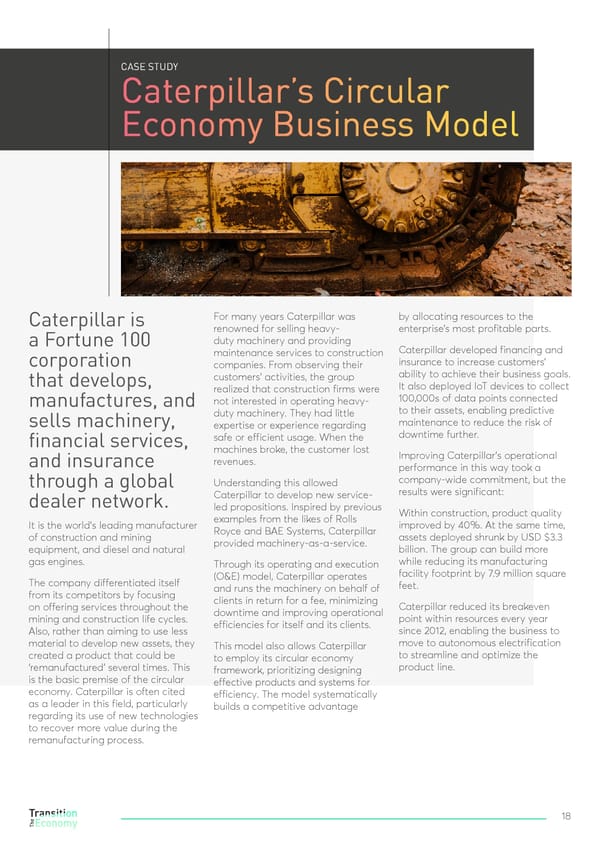CASE STUDY Caterpillar’s Circular Economy Business Model Caterpillar is For many years Caterpillar was by allocating resources to the renowned for selling heavy- enterprise’s most profitable parts. a Fortune 100 duty machinery and providing Caterpillar developed financing and corporation maintenance services to construction insurance to increase customers’ companies. From observing their ability to achieve their business goals. that develops, customers’ activities, the group It also deployed IoT devices to collect realized that construction firms were 100,000s of data points connected manufactures, and not interested in operating heavy- to their assets, enabling predictive sells machinery, duty machinery. They had little maintenance to reduce the risk of expertise or experience regarding downtime further. financial services, safe or efficient usage. When the machines broke, the customer lost Improving Caterpillar’s operational and insurance revenues. performance in this way took a through a global Understanding this allowed company-wide commitment, but the dealer network. Caterpillar to develop new service- results were significant: led propositions. Inspired by previous Within construction, product quality It is the world’s leading manufacturer examples from the likes of Rolls improved by 40%. At the same time, of construction and mining Royce and BAE Systems, Caterpillar assets deployed shrunk by USD $3.3 equipment, and diesel and natural provided machinery-as-a-service. billion. The group can build more gas engines. Through its operating and execution while reducing its manufacturing (O&E) model, Caterpillar operates facility footprint by 7.9 million square The company differentiated itself and runs the machinery on behalf of feet. from its competitors by focusing clients in return for a fee, minimizing on offering services throughout the downtime and improving operational Caterpillar reduced its breakeven mining and construction life cycles. efficiencies for itself and its clients. point within resources every year Also, rather than aiming to use less since 2012, enabling the business to material to develop new assets, they This model also allows Caterpillar move to autonomous electrification created a product that could be to employ its circular economy to streamline and optimize the ‘remanufactured’ several times. This framework, prioritizing designing product line. is the basic premise of the circular effective products and systems for economy. Caterpillar is often cited efficiency. The model systematically as a leader in this field, particularly builds a competitive advantage regarding its use of new technologies to recover more value during the remanufacturing process. 18
 The Transition Economy High Res Page 17 Page 19
The Transition Economy High Res Page 17 Page 19